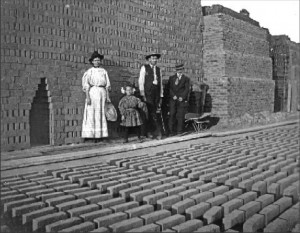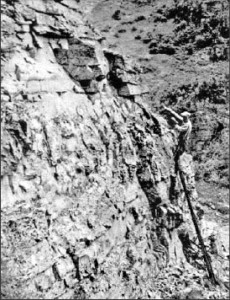by Susan Tweit
If you’re looking for a simple way to teach Colorado nature literacy, search no farther than our state’s official list of symbols. It’s longer than you might expect, and affords an easy way to begin exploring Colorado’s incredible natural diversity.
How many official natural symbols – bird, tree, rock, fish, wildflower, and so on – does Colorado boast?
If you guessed an even dozen, you’re correct. Can you name them?
Most people know the state wildflower: Colorado blue columbine, the familiar blue and ivory blossoms found from mountain meadows to above tree-line. This first official symbol of the state’s diverse flora, fauna, and minerals was adopted in 1899, twenty-three years after Colorado became a state.
The next state symbol wasn’t designated until the Great Depression, when the lark bunting, a songster of grassland and prairie, was named the state bird in 1931. Lark buntings are easiest to see in late spring, when the males, in striking black plumage and white wing patches fly a fluttering courtship flight while trilling their mating song.
In 1939, the state legislature legalized an informal symbol when the Colorado blue spruce was designated the state tree. This tall and symmetrical conifer with the silver-blue foliage was first described in 1862 on Pikes Peak and grows from cool and shady locations along foothills streams to subalpine forests on the high peaks.
More than two decades passed before the legislature declared the Rocky Mountain bighorn sheep as the state animal in 1961. Look for these stocky wild sheep with the trim buff-colored coats and curling horns in Bighorn Sheep Canyon along the Arkansas River in winter, and in summer, in alpine grasslands on high peaks including Mount Evans, west of Denver.
In 1971, the state legislature named the Colorado aquamarine, found in rock cavities at elevations over 14,000 feet on Mount Antero and White Mountain in the Sawatch Range, as the state gemstone.
Then in 1982, came the state fossil, the Stegosaurus, recognized by the spine decorated with triangular “armor plates” – now thought to be fins to dissipate excess heat. A Stegosaurus skeleton discovered by a Canon City high school class is on display at the Denver Museum of Nature and Science.
In 1987, blue grama grass, a characteristic bunchgrass with curving eyebrow-like flower heads, was named the state grass. Then in 1994, the Greenback cutthroat trout, a beautifully speckled trout native only to Colorado streams east of the Continental Divide and presumed extinct, was named the state fish after it was rediscovered in an isolated creek.
In short order came the Colorado hairstreak as state butterfly in 1996, and rhodochrosite with its rose-pink to red cubic crystals as the state mineral in 2002. In 2004, Yule marble was named the state rock, and in 2007, Colorado gained a state reptile, the western painted turtle.
And that’s the official dozen: symbols of Colorado’s diverse nature.
(Look up the list of state symbols on the official state web site at colorado.gov/dpa/doit/archives/history/symbemb.htm)
Copyright 2009 Susan J. Tweit. Originally published in the Salida Mountain Mail.
Award-winning writer Susan J. Tweit is the author of 12 books, and can be contacted through her web site, susanjtweit.com or her blog, susanjtweit.typepad.com/walkingnaturehome

